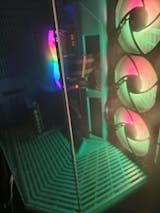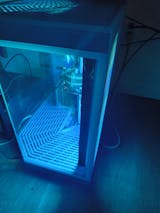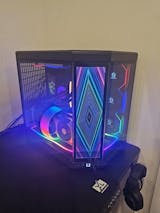Improving visuals and frame rates is the main goal of most gamers and visual computing aficionados when it comes to GPU (visuals Processing Unit) upgrades. Although a strong graphics processing unit (GPU) is necessary for producing eye-popping images, let's move on to another important but sometimes neglected part of the setup: the display. The issue may lie with your display rather than your graphics processing unit (GPU). This post will go over the reasons why your display is so important to your gaming and computer experience as a whole.
Resolution Matters
The resolution is one of the most important features of a monitor's performance. The amount of pixels on the screen, or resolution, greatly affects the sharpness and detail of your visuals. The long-established standard of 1080p (Full HD) displays continues to attract many people. But, with the rise of powerful GPUs, larger resolutions such as 1440p (Quad HD) and 4K (Ultra HD) are quickly gaining popularity.
By limiting yourself to a 1080p display, you are wasting the power of your graphics card if it is capable of handling greater resolutions. For noticeably sharper images and more lifelike gaming experiences, consider upgrading to a monitor with a higher resolution.
Refresh Rate and Smooth Gameplay
When playing games, the refresh rate of your display is just as important as the resolution. Your monitor's frame rate (in FPS) is defined by its refresh rate. The majority of displays are capable of displaying 60 frames per second (FPS) due to their 60 Hz refresh rate. Even while this works for a lot of things, gamers usually want things to run more smoothly.
A higher number of frames per second may be displayed by monitors with high refresh rates, such as 120Hz, 144Hz, or even 240Hz. A high-refresh-rate display can deliver better gaming and less input lag, but if your monitor is limited to 60Hz, you won't be able to take use of your GPU's higher frame rate capabilities. Higher refresh rates provide more responsiveness and smoothness, which is very useful for competitive games.
Response Time and Reduced Motion Blur
How fast a pixel may go from one color to another is called the monitor's reaction time. For fast-paced games, a decrease in response times is essential since it reduces motion blur. When playing games with fast-paced action, you can see blurring, ghosting, or trailing effects if your display isn't fast enough.
A low-response-time monitor, usually 1ms for the finest gaming experience, will help you avoid these problems. Your gaming experience will be much more fluid and pleasurable if your display can handle the fast changes in images provided by your GPU.
Adaptive Sync Technology
Modern graphics processing units (GPUs) frequently include technologies such as NVIDIA G-Sync and AMD FreeSync. With the aid of these technologies, your monitor's refresh rate and the frame rate generated by your GPU may be synchronized. A more smooth and stutter-free gaming experience is achieved by this synchronization, which decreases screen tearing and stuttering.
Your display must be compatible with these technologies, though, for them to function at their best. You may miss out on the silky smooth gameplay your GPU is capable of delivering if your display isn't compatible with G-Sync or FreeSync.
Color Accuracy and HDR
Even though performance is the main focus when designing gaming displays, having High Dynamic Range (HDR) capabilities and accurate colors is crucial for a really immersive visual experience. Video games and other multimedia material benefit greatly from a display that supports high dynamic range (HDR) and has accurate colors.
You may not be able to enjoy the breathtaking graphics of current media and games if your display does not support high dynamic range or accurately displays colors. Your computer experience can be greatly improved by upgrading to a monitor that has these capabilities.
You can't have a gaming or computer setup without a graphics processing unit (GPU), but it's far from the only component that matters. The quality of your visual experience is greatly affected by your display. To get the most out of your graphics processing unit (GPU), you should upgrade to a high-refresh-rate, high-resolution display with adaptive sync technology, a low reaction time, and improved gameplay and visual immersion.
Finally, while planning an update, don't give your GPU all the attention it deserves. Look at your display more closely; maybe you should get a new one that works better with your graphics processing unit. Upon completion of this task, you will realize that your monitor may play a crucial role in your computer experience, comparable to your graphics card.














